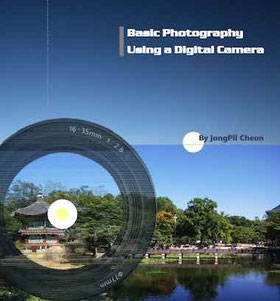You Don’t Need Gimmicks, You Need These 4 Tips To Take Better Pictures
By Jason RowLike many of you, I always want to take better pictures. But, if you love photography as I do, you might notice that your timeline on Facebook is frequently infested with adverts for photographic devices or software that promises to make you a better photographer. I tend to ignore them.
Beware Of The Gimmick
One advert that has been popping up on my timeline with freakish frequency lately is for something called a Lens Ball. A Lens Ball is a kind of crystal ball that the photographer places a meter or so in front of the camera. The ball reflects and upside down rendition of the scene behind it.It did, however, get me thinking about some of the gimmicks we employ in photography, often to cover up poor composition or technique. So today we will look at some of those gimmicks and also some ways to take better pictures than using those gimmicks.
BTW if you are interested in doing something cool without purchasing a lens ball – take a look at a photo in a lens filter trick. This post-production exercise was explained by John Thompson on our forums!

1. Too Much Vignetting
Vignetting is a compositional tool that has been around for a very long time. It is used to draw the viewers eye towards the subject and isolate them from the background. It has also become terribly overused and often overdone. There is a temptation to add dramatic vignetting in post-production, pushing it way off centre and turning the edges of the frame virtually black. It looks bad and is a gross exaggeration of how vignetting should be used.As we said though, vignetting is a powerful compositional tool if used well. For the most natural-looking vignette, use a telephoto with a lens hood and stop down to f8 or f11. Nearly all lenses will display some mild vignetting but if you have some older vintage lenses these will probably give a better effect.

Further Learning:
- When To Use Vignetting In Photographs
- Creating A Vignette Effect In Photoshop
- How A Vignette Can Make Your Photographs Pop

2. Excessive Shallow Depth of Field
So Bokehering is a made-up word but one that, I think describes the phenomenon of shooting everything with an ultra-shallow depth of field. You know the shots, ones that became viral a few years ago and is now so overused it is certainly a cliche.It’s achieved by using a fast telephoto at it’s widest aperture. You then place your subjects a long way from the camera, on a pretty path sometime during the golden hour. Add in a little out of focus foreground and you have nailed the cliche. Some people even add in more blur during post-production as if there was not already enough.

Further Learning:
- How To Achieve Creamy Bokeh
- How To Get A Blurry Background In Your Photos
- 6 Tips For Mastering Bokeh
3. HDR – The Original Cliche
While we are probably well past “peak HDR” there is still a lot of bad HDR around. HDR is a tool designed to allow photographers to expand the dynamic range of their sensors to something close to the ability of the human eye. However, from the very early days of use, some photographers took the range well beyond the human eye. In well composed and considered shots this was artistic, however for a lot, it was a way to cover up a bland composition or poor lighting conditions.
Further Learning:
- Bite Size Tips: How To Use HDR Well To Enhance Your Images
- 10 Common HDR Photography Mistakes And How To Avoid Them
- How To Do HDR Photography – Gear And Process

4. Gimmick Lenses.
Now I should state from the start that lenses such as the Lensbaby range have come a long way and now have some genuinely useful and creative tools. However, their earliest products have been copied and used so much that the original Lensbaby effect, much like excessive bokeh has become a cliche. Like many of the effects listed above, if done well, with nice light and good composition the shots can still work. However, like the effects listed above, it is often used as a visual gimmick to attract likes and shares from non-photographers rather than praise from your peers.If you are looking for creamy soft-focus images, Lensbaby and others now produce sterling lenses to achieve very natural looking shots. You could, however, go back to basics by using wide aperture vintages lenses, cheap UV filters and a tub of Vaseline. Now before you get too mucky minded, you simply spread the Vaseline lightly over the UV filter, with a clear section as the centre. Put the filter on the lens and shoot some nice wide aperture portraits. The effect can be superb and for a whole lot less than the price of a new soft-focus speciality lens.
Further Learning:
- The 7 Best Exotic Lenses Of All Time
- 5 Fun Ways To Use Fisheye Lenses
- 7 Best Practices For Portrait Photos The Get Noticed

Learning And Applying Advanced Composition Will Elevate Your Photographs
Many of these overused techniques are really hiding bad composition. Conversely, use any of these techniques with great composition and your images will shine. Advanced Composition – will ensure you create images that pop. You'll get more out of your photography and start taking images that will truly capture your creative vision. If you’d like to improve your composition skills and learn concepts that go beyond the ‘rule of thirds’, do take a look at Kent DuFault’s guide Advanced Composition.Share this article.






































